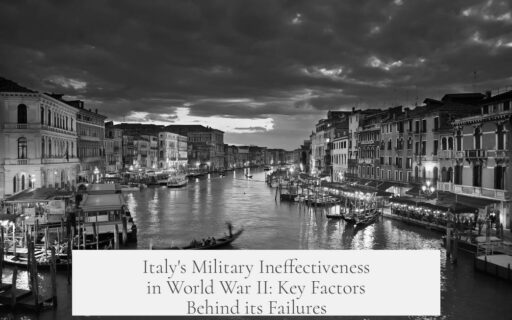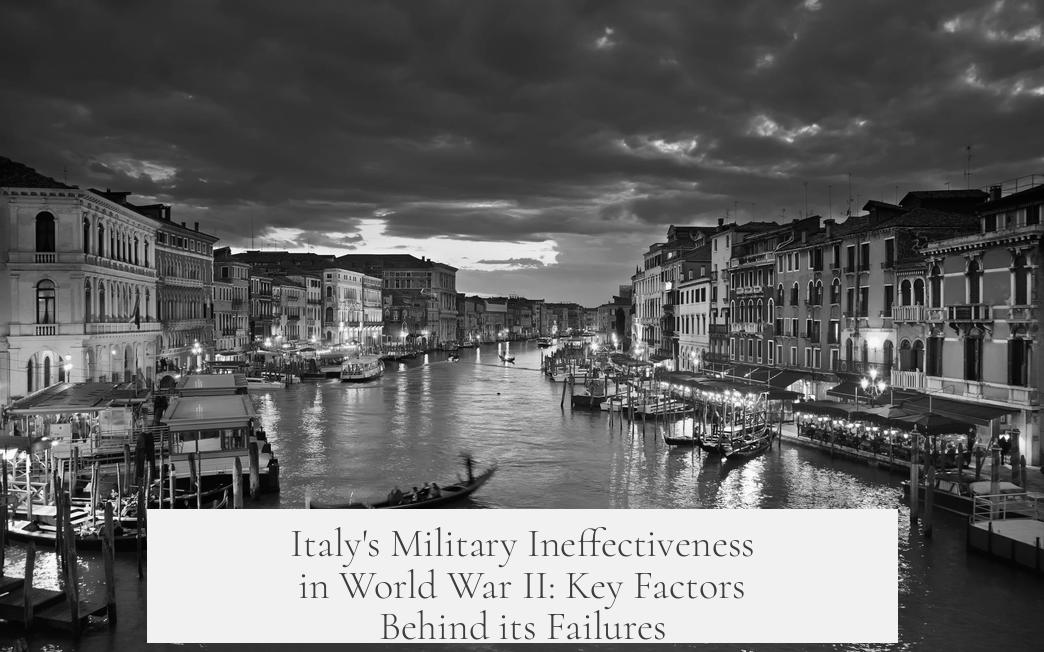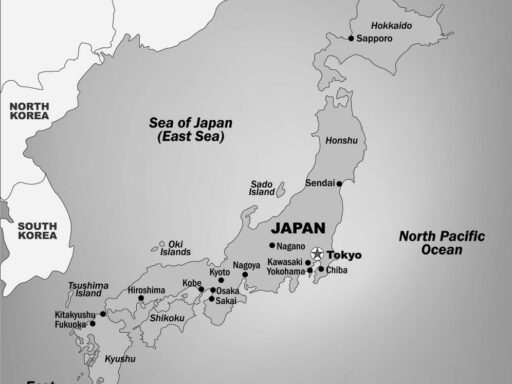Italy’s military was ineffective in World War II due to a mix of poor preparation, inadequate resources, flawed leadership, and weak industrial capacity. These issues combined to prevent Italy from mounting a strong or sustained military effort against modern European powers.
The Italian army entered the war largely unprepared. Despite Mussolini being warned that Italy’s forces would not be ready until at least 1943, he declared war in 1940, expecting a quick victory as France and Britain appeared vulnerable. This misjudgment exposed the army’s lack of preparedness. Troops were often equipped with outdated weapons, such as rifles and artillery dating back to World War I. Italy lacked sufficient tanks, aircraft, and motorized divisions, relying heavily on infantry units that had minimal motor transport and support vehicles.
The outdated equipment significantly reduced operational effectiveness. Italy’s tank development lagged behind that of other nations. Italian tanks were light and obsolete compared to those fielded by Britain, Germany, and the USA. For example, the elite 132nd Armored Division “Ariete” in North Africa could not match British armored forces, and Rommel himself distrusted Italian tank units. The lack of mechanization restricted rapid offensive movements. Italian forces advanced in long infantry columns, which was a 19th-century tactic, making them vulnerable to faster, motorized British units.
Industrial limitations further hindered Italy’s war effort. Italian factories could not mass-produce modern weapons effectively. The country’s industrial base was small and less advanced than Germany’s, Britain’s, or the USA’s. Allied bombing campaigns severely damaged northern Italian factories, reducing output of raw materials and arms. Italy even postponed entering the war to attempt building up supplies, but production never met battlefield demands. This shortage of equipment and materials meant the army was chronically under-supplied.
Leadership problems deeply affected performance. Mussolini favored generals loyal to Fascism and elite families rather than those with skill or experience. This politicization of command hurt strategic decisions. Mussolini frequently ordered costly attacks without regard for terrain or enemy strength, such as the failed invasions of Greece and the challenging battles in France. Rodolfo Graziani, commander in Libya, opposed ill-advised offensives like the invasion of Egypt but was overruled. The military command structure was rigid and discouraged dissent, stifling adaptation and realistic planning.
Structural weaknesses were evident in the army’s organization. Mussolini implemented “binary” infantry divisions, consisting of only two brigades each, while other nations fielded larger divisions with three or four brigades. These smaller units were less effective in large-scale battles. For instance, Italian forces suffered heavy losses in Greece and France, where better-prepared and stronger infantry divisions of their opponents overwhelmed them.
Logistics were a repeated obstacle. Italy lacked sufficient motorized transport, so supply lines were slow and vulnerable. Supplying troops on distant fronts like North Africa necessitated sea transport through the Mediterranean, frequently contested by Allied naval forces based in Gibraltar and Malta. This limited the flow of fuel, ammunition, and reinforcements. The deficiency in mechanization and transport prevented Italians from exploiting breakthroughs or executing mobile operations, relegating them to static defense or costly frontal assaults.
The morale of Italian troops and public support also declined over time. Initial enthusiasm for war faded when Italian forces suffered defeats and setbacks. The Italian public never fully backed Mussolini’s war ambitions, and the high casualty rates in harsh environments, such as Greece’s mountainous terrain, weakened willpower. Many soldiers were inadequately trained due to rapid conscription without sufficient preparation. Although conscription laws mandated 18 months of training, many received far less, learning combat skills in active fighting, which lowered effectiveness.
Additionally, decades of internal instability, such as factional violence and the influence of organized crime like the mafia, hampered Italy’s ability to unify a war effort. Political instability within the Fascist regime, including corruption and ineffective governance, undermined strategic coordination. Mussolini’s military decisions were often driven by ideology and political considerations rather than rational military planning. By mid-1943, mounting military failures and declining public support led to his removal from power.
Italy’s prior military engagements also weakened its strength. Conflicts in Ethiopia, Spain, and Albania drained resources and finances, leading to severe national debt and financial strain. These wars left the military exhausted and the industrial base unable to modernize effectively or sustain a prolonged conflict. The cumulative effect rendered Italy ill-equipped to adapt to the demands of total war against well-prepared Allied forces.
| Factors | Impact on Italy’s Military Performance |
|---|---|
| Lack of Preparedness | Entered war ill-equipped; soldiers poorly trained; delayed modernizing forces |
| Inferior Equipment | Outdated tanks and aircraft; no aircraft carriers; insufficient mechanization |
| Poor Leadership | Politicized officer promotions; interference from Mussolini; flawed strategies |
| Industrial Limitations | Inadequate weapons production; bomb damage; raw material shortages |
| Logistical Problems | Poor transport; vulnerable supply lines; inability to maneuver quickly |
| Structural Weaknesses | Smaller infantry divisions; less combat power than Allies |
| Morale and Popular Support | Limited public support; low troop morale; inadequate training |
| Political Instability | Factional violence; corruption; unstable government |
- Italy’s army was not prepared for modern combined arms warfare.
- Old equipment and lack of mechanization limited combat effectiveness.
- Leadership flaws and political interference undermined military strategy.
- Industrial capacity was insufficient to meet wartime demands.
- Logistics and supply line weaknesses restricted operational mobility.
- Smaller infantry divisions reduced battlefield staying power.
- Low morale and poor training worsened combat performance.
- Previous conflicts exhausted financial and military resources.
Italy’s military failures stemmed from systemic problems before and during the war. The combination of unpreparedness, flawed leadership, outdated technology, poor logistics, and political instability prevented Italy from effectively fighting against Allied and Axis powers. These factors led to repeated setbacks on multiple fronts, undermining both military successes and Mussolini’s regime.
Why was the Italian army unprepared for WWII despite early warnings?
Italy entered WWII without adequate preparation. Mussolini was warned the army wouldn’t be ready until 1943 but declared war earlier, expecting a quick victory. The army lacked motorized divisions and modern equipment.
How did leadership affect Italy’s military performance in WWII?
Mussolini interfered in military decisions, forcing costly offensives. Generals were often chosen for loyalty rather than skill. This led to poor strategic choices and weakened Italy’s war efforts.
What role did equipment and technology play in Italy’s military struggles?
Italian tanks were outdated and inferior to those of other powers. Armored units were small and designed mainly to support infantry. This technological gap hurt Italian forces, especially in North Africa.
Why did logistical problems weaken Italy’s military operations?
Italy’s lack of mechanized transport slowed troop movements and supply lines. This made rapid offensives impossible and led to large Italian forces being cut off and captured, as in Operation Compass.
How did structural differences in military organization undermine Italian divisions?
Italian infantry divisions were smaller, with fewer brigades than other armies. These “binary” divisions were weaker and struggled against better-structured French and Greek forces in early battles.




